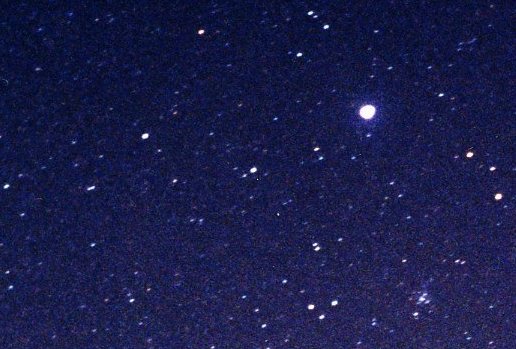
 |
Fourth magnitude Iota Canis Majoris lies at center, and is rather overwhelmed by brilliant Sirius (toward upper right). Sirius, however, is almost 300 times closer. Comparable in apparent brightness, Muliphein (Gamma Canis Majoris) is up and to the left. The prominent, young (250 million year old) open cluster Messier 41, 2250 light years away (about the same distance as Iota), is near the lower right corner. |